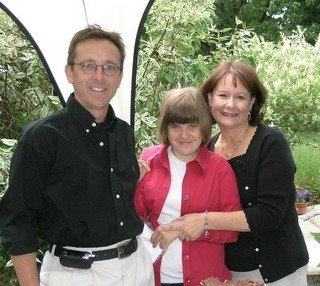Dear Friends,
Chuck Colson had a great commentary today.
The transcript is pasted below.
A Model for Engagement:
Wilberforce and The Better Hour...
February 19, 2008
At a recent conference on Christian worldview, a college student asked the question: "Is there a model for engaging secularism?" The panel of well-known experts was stumped, clearly unfamiliar with the fact that 200 years ago a small group of politicians, bankers, writers, and lawyers addressed and overcame the crisis of secularism and immorality in England.
A small group of about 10 friends was known as the Clapham Circle. Following the lead of English parliamentarian William Wilberforce, the Clapham Circle set about with two great, major objectives: In Wilberforce's words, "the suppression of the slave trade and the reformation of manners." In the process, they helped transform the self-indulgent society of eighteenth-century England.
How they did that is the subject of a new book called Creating the Better Hour: Lessons from William Wilberforce, edited by a Centurion, and my friend, Chuck Stetson. The accompanying documentary called The Better Hour airs this month on PBS television stations.
Stetson discusses 10 methods or strategies that Wilberforce and his associates used to shape public opinion. One was the use of a powerful symbol to focus attention on the plight of the slave. Wilberforce enlisted the famous Josiah Wedgwood to create a special cameo. At the center of the cameo was a kneeling slave in shackles. Inscribed around the edges of this picture was the simple, but provocative question: "Am I Not a Man and a Brother?"
The Wedgwood cameo became a kind of logo when the whole concept of a logo was still novel. The picture and the accompanying question became a powerful symbol for human dignity. Women, who at the time could not vote, wore it on their dresses and on jewelry to show their support for the abolition of the slave trade.
The images from the cameo appeared on everything from plates to snuff boxes. The slogan "Am I Not a Man and a Brother?" was as well known to the people of Wilberforce's day as Nike's "Just do it" is to any modern American consumer.
And the slogan posed a pointed question that was simple but brilliant. People who never gave slaves a second thought had to examine their own attitudes and engage the issue. It reminds me of how pro-lifers are using in utero photography to force people to ponder the humanity of babies in the womb.
Stetson goes on to describe the other methods Wilberforce and company used so well: long-term planning, teamwork, research, effective networking, use of volunteers, etc.—methods we Christians would do well to emulate as we tackle the myriad social ills we face in this postmodern, self-indulgent society.
But what I take away from Wilberforce and his circle is not just good ideas about strategies and tactics, but also hope. This small handful of committed believers changed the world. Their unfailing efforts eventually resulted in the abolition of slavery itself in Britain and led to the formation of more than 69 voluntary organizations—organizations that tackled a wide range of social concerns, from child labor to the prevention of cruelty to animals to universal education."Is there a model for engaging secularism?"
As Stetson's book shows us, thanks to William Wilberforce and the Clapham sect, there certainly is.
Tuesday, February 19, 2008
Subscribe to:
Posts (Atom)


